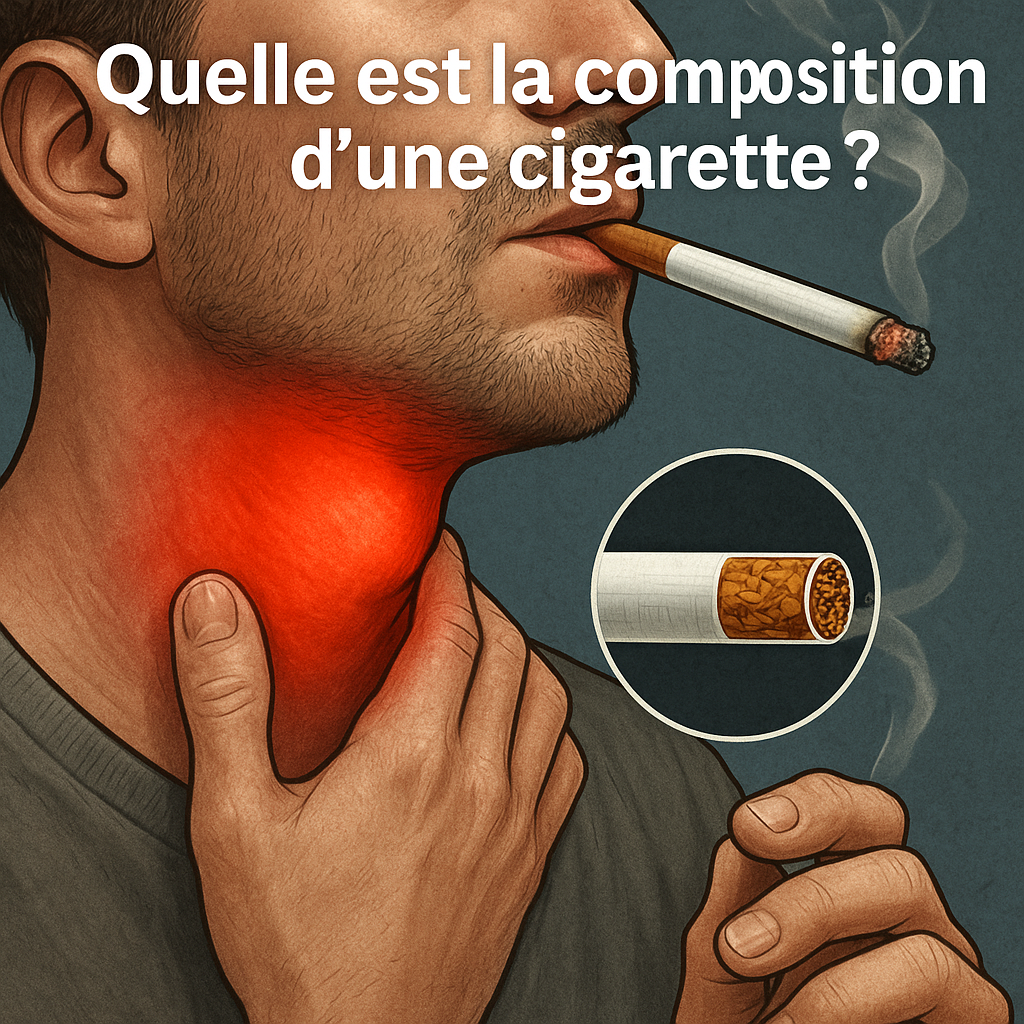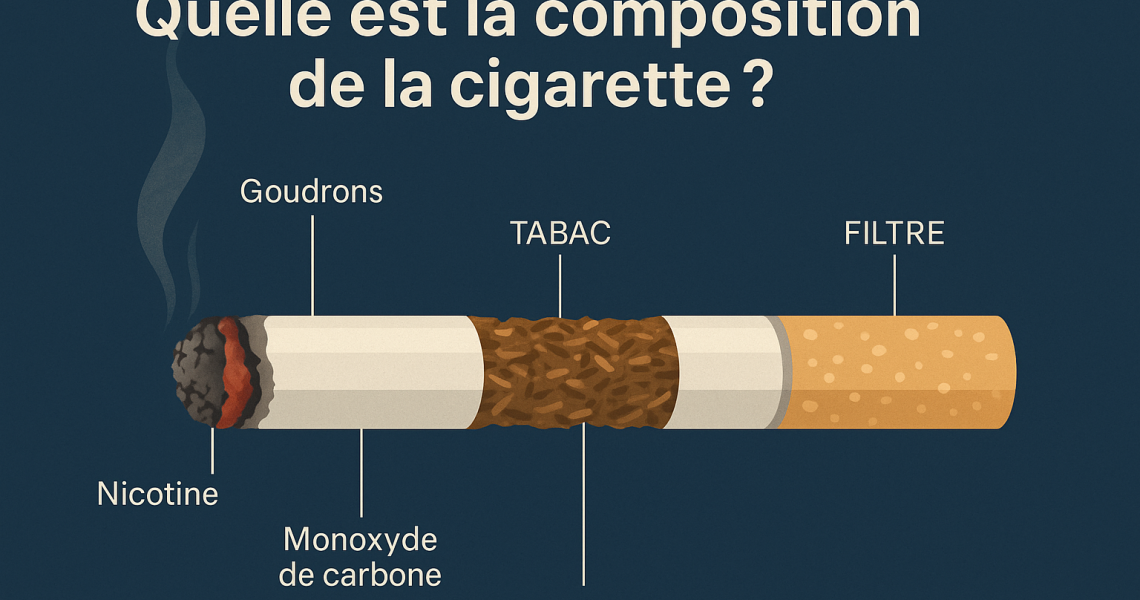Diving into the heart of an industrial product that is disrupting health, the body and the environment.
Lighting a cigarette seems harmless. Yet behind that little cylinder of paper lies a veritable miniature chemical factory. The
But what does a cigarette really contain? What

1. Tobacco: a natural product turned industrial poison
Tobacco is originally a plant. Its leaves, dried and then ground, naturally contain
These additives include sugars, flavourings and even residual pesticides from cultivation. When burned, they transform into toxic gases such as carbon monoxide and formaldehyde, substances directly linked to numerous cancers.
The lungs then become the first receptacle of this internal pollution. Repeated
2. A chain of chemical components: the combustion trap
Combustion is at the heart of the danger. When a
Cadmium, the heavy metal used in batteries, is another formidable component. It accumulates in the liver and kidneys, creating serious metabolic disorders. Formaldehyde, meanwhile, irritates mucous membranes and triggers inflammatory reactions in the respiratory tract.
The result? Cumulative
3. Additives and gas: when industry perfects dependence
To win the loyalty of smokers, the tobaccoindustry perfects its formulas. Certain
But behind these tricks lie some fearsome products: volatile acids, hydrogen, oxygenated gases and hydrocyanicacid residues. They all contribute to the gradual intoxication of the body. The effects on health are manifold: shortness of breath, persistent coughing, loss of appetite, and deterioration of lung capacity.
Theindustry knows that these substances are addictive. By manipulating

4. Effects on the human body: a system under attack from all sides
Smoking affects almost every organ. First, the
The brain, meanwhile, is subject to the chemical fluctuations of nicotine. The
Formaldehyde, cadmium, benzene and cyanide act as veritable systemic poisons. They disrupt hormonal functions, attack the kidneys and damage peripheral nerves. These cumulative effects explain the progression of smoking towards chronic pathologies, notably cancers of the respiratory tract.
5. The shadow of vaping and prevention issues
Faced with the rise in smoking, vaping is often presented as an alternative. However, vaping products also contain nicotine and other toxic substances, sometimes oxygenated, whose long-term effects remain poorly understood.
Prevention remains the best weapon. Providing information from an early
The challenge remains immense: to change behavior in a context where the tobaccoindustry continues to invest heavily in marketing, design and attractive tastes aimed at new generations.
6. Modern stop-smoking solutions
Fortunately, recent advances offer new hope for smokers wishing to quit . Natural, non-invasive approaches are gaining ground, including auricular reflexology and the anti-smoking laser.
The MyLaserTabac method, for example, is based on the stimulation of precise points on the ear, areas linked to the body’s organs. Using a gentle, painless laser, this technique regulates addiction-related nerve signals and helps reduce nicotine cravings.
Unlike drug substitutes, this approach does not release chemicals into the bloodstream. It acts on neurophysiological reflexes, restoring balance to the nervous system. Many users report a rapid loss of the desire to smoke, without side effects or stress.
Anti-smoking laser is a modern, effective and health-friendly solution. Combined with personalized follow-up, it enables you to give up cigarettes gently, while promoting better breathing and a lasting return to well-being.
Conclusion: Understanding for better liberation
Behind every cigarette lies a complex chemistry: nicotine, tar, carbon monoxide, formaldehyde, cadmium, cyanide… All these components work together to maintain dependency and multiply health risks.
But understanding this composition is the first step towards change. Thanks to modern techniques such as those offered by
